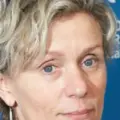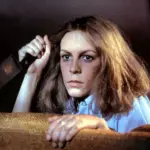The animation studio Aardman, which has produced classic claymation works such as Chicken Run and Wallace and Gromit, just recently came with a sad news: They may be about to stop making new works.

We all know that creating claymation, a type of stop-motion animation, requires a lot of time and effort. In today's age, traditional techniques like this are expected to become obsolete due to the swift progress in animation technology. However, Aardman Animations is facing a different situation.
The imminent crisis facing Aardman Animation is due to a shortage of clay.
Following the global success of films like Chicken Run and Wallace and Gromit, Aardman has consistently released new claymation projects with substantial box office earnings, averaging over $130 million per film.
In December 2023, they had plans to release a sequel to Chicken Run on Netflix.
Just before their upcoming film's release, The Daily Telegraph reported a concerning situation: Aardman Animations might stop making claymation due to a shortage of clay.
While a 'clay shortage' may sound unbelievable, it is a reality. Aardman has been using a special clay called 'Newplast' throughout their production process.

Newplast's unique qualities make it exceptionally suitable for stop-motion animation. Aardman's animation team has long been accustomed to working with it. Unfortunately, the company producing Newplast decided to close down and cease production this year.
Upon learning this news, Aardman urgently cleared out their remaining stock, purchasing around 400 kilograms of Newplast clay. However, this supply is likely only sufficient for producing one or two more films.
Put simply, Aardman Animations might face difficulties in producing new projects once their clay supply is depleted.

The news has left many claymation enthusiasts feeling deeply saddened, as the works Aardman created have become a nostalgic part of a generation's childhood. But more people were surprised. After all, they never thought animation companies would face this kind of crisis due to clay shortage.
However, considering the intricacies of their animation process, the seemingly inconspicuous 'clay' plays a crucial role.
The steps in crafting claymation are relatively easy to infer: sculpting models, adjusting movements, and capturing each frame.
What's challenging to figure out is the patience and perseverance required. For Aardman Animation, their team can only produce approximately 11 seconds of footage per day.

Taking the famous Chicken Run as an example, this 84-minute film required 30 sets, 80 animators, and 180 staff members. It took them 18 months to complete the film, which involved over 120,000 frames.
This explains why lifeless clay can exhibit lively performances—it's meticulously crafted by human hands. Every movement requires multiple adjustments by animators. During this process, the body parts on the models need constant replacement. The models are designed with an internal steel framework covered in clay or silicone. Major movements involve adjusting the skeleton, while minor ones involve tweaking the clay.
The production of Chicken Run alone consumed 3,500 kilograms of clay. It required 563 models, not to mention the numerous facial expressions and body parts each model needed.
A few months ago, Aardman Animation uploaded a clear animation-making process on YouTube. After watching this clip, I genuinely thought they'd earned every bit of their money and status. In this marathon of a production process, the suitable clay naturally played a decisive role.
The clay must meet various criteria to meet filming conditions: high plasticity and resistance to rapid deformation under the intense light required for shooting.
The clay known as Newplast perfectly fulfills these requirements. Originally invented by an art teacher named Louis in his backyard, Newplast is a professional clay material with a soft, rubbery texture and heat-resistant properties. It has been relied upon by clay modeling enthusiasts and can be considered a magical material in the world of claymation.
Throughout its claymation production history, Aardman Animation has almost exclusively used Newplast clay, considering it the best among similar materials worldwide. However, with the retirement of the operator of the Newplast company and the inability to find a successor, the company announced its closure earlier this year. For Aardman, the crucial material they've been using for decades is running out.
The news of 'Aardman running out of clay' quickly gained significant attention on social media. Nobody expected their favorite childhood animation series to face an end in this manner.

While people were still mourning this news, Aardman Animation recently released a message to their fans. The essence of it was: Don't worry. There will be a solution.
In their statement, they acknowledged the reality of the clay shortage but assured everyone that there was no need to worry. They have a considerable amount of stock. 'As much as Wallace's studio. '

Additionally, they've been undergoing extensive adjustments and planning for a smooth transition to new stock. They remain committed to creating claymation.
With this news, fans breathed a sigh of relief. Although they can't replenish the original material, Aardman Animation, with its existing stock (possibly referring to the previously acquired 400 kilograms), clearly hasn't reached a point of no return. The road ahead may be challenging, considering the possibility of transitioning to new materials and finding new suppliers—something not as easy as they portrayed.
The earliest claymation dates back to 1926. However, during the same period, cartoon animation had risen and dominated the industry, causing this laborious and time-consuming animation technique to remain in the shadows. With the emergence of smoother, more vibrant cartoon animation, people quickly lost hope in clay, considering it a clumsy method.
However, this did not deter the founding of Aardman Animation. In 1972, two founders initially aiming for low-budget projects established Aardman Animation. Over the decades, they garnered numerous awards for their claymation.
It wasn't until the year 2000 when they released Chicken Run, the highest-grossing stop-motion animated film of all time, proving that even 'clumsy' methods can forge their own path.

Despite the subsequent leaps in animation technology, Aardman Animation has not abandoned its commitment to claymation. In an interview, they expressed a deep understanding of what audiences love: imperfect, perhaps with fingerprints, but lively visuals.
One can believe that such a passionate animation studio will continue this beloved craft even after this unexpected challenge.



























Share your thoughts!
Be the first to start the conversation.